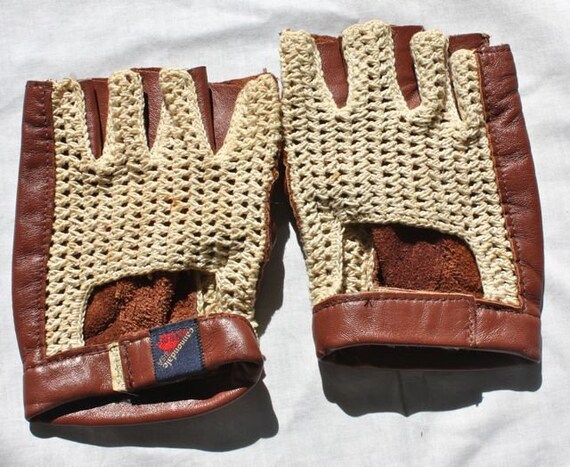Now that the United States seems to be on the road to recognizing that Cuba does indeed exist (Was it just some black hole from which a species of aliens called "Cubans" came? So that's why we have that prison in Guantanamo!), it's hard not to wonder about the future of cycling there.
Of course, American groups have been taking bicycle tours in Cuba for years--under the pretense of "cultural exchange" as, officially, Americans aren't/weren't allowed to visit Cuba as tourists. Everyone, it seems, who's gone on such a tour there raves about it: The roads are quiet, there are plenty of places to stay, the people are friendly--and it's cheap, once you get there. Hey, I could be enticed into going there. All I'd have to do is get myself and my Spanish in shape. About the latter: I recited a short poem by Federico Garcia Lorca in the original at a recent poetry reading, and all of the Spanish-speakers understood it. A few even complimented my Spanish afterward. So maybe I'm better in that category than I thought. And the rides I've taken lately have felt really good.
Anyway, in cycling the word "tour" can refer to the kind I've mentioned: riding, seeing the sights and mingling with the people. But there is another kind of "tour", as in Le Tour de France or other multi-day races. Unbeknownst to most norteamericanos, "The Pearl of the Antilles" had its own multi-day race that covered much of the island.
La Vuelta a Cuba was held for the first time in 1964 with Sergio "Pipian" Martinez winning. He would take four of the first six editions of La Vuelta. Not surprisingly, most editions of the race were won by Cuban riders--and, until 2002, the only non-Cuban winners came from Soviet-bloc countries. That year, Italian Filippo Pozzato of the Mapei-Quick Step team took the honor; the following year, Todd Herriot became the first and only US rider to win.
The race was not held from 1991 until 1999. Although no one seems to have said as much, that suspension may have been a result of the fall of the Soviet Union, which probably funded much of Cuba's cycling program (and much else in the country). Races throughout the former Soviet bloc met similar fates during that time. Some were discontinued; others, like the Peace Race (which ran through Poland and the former Czechoslovakia and German Democratic Republic), held on for some years but finally succumbed to the difficulties of finding funds after state sponsorship disappeared.
Somehow La Vuelta de Cuba was revived in 2000. It was held every year until 2010. In all, the race was held 35 times. (There was no race in 1970, 1975 or 1982.) Sergio Martinez's four victories were exceeded only by the six Eduardo Alonso attained, in 1984 and every year from 1986 through 1990.
Of course, American groups have been taking bicycle tours in Cuba for years--under the pretense of "cultural exchange" as, officially, Americans aren't/weren't allowed to visit Cuba as tourists. Everyone, it seems, who's gone on such a tour there raves about it: The roads are quiet, there are plenty of places to stay, the people are friendly--and it's cheap, once you get there. Hey, I could be enticed into going there. All I'd have to do is get myself and my Spanish in shape. About the latter: I recited a short poem by Federico Garcia Lorca in the original at a recent poetry reading, and all of the Spanish-speakers understood it. A few even complimented my Spanish afterward. So maybe I'm better in that category than I thought. And the rides I've taken lately have felt really good.
Anyway, in cycling the word "tour" can refer to the kind I've mentioned: riding, seeing the sights and mingling with the people. But there is another kind of "tour", as in Le Tour de France or other multi-day races. Unbeknownst to most norteamericanos, "The Pearl of the Antilles" had its own multi-day race that covered much of the island.
| Poster of the 1969 Vuelta a Cuba, by Jose Papiol. |
La Vuelta a Cuba was held for the first time in 1964 with Sergio "Pipian" Martinez winning. He would take four of the first six editions of La Vuelta. Not surprisingly, most editions of the race were won by Cuban riders--and, until 2002, the only non-Cuban winners came from Soviet-bloc countries. That year, Italian Filippo Pozzato of the Mapei-Quick Step team took the honor; the following year, Todd Herriot became the first and only US rider to win.
The race was not held from 1991 until 1999. Although no one seems to have said as much, that suspension may have been a result of the fall of the Soviet Union, which probably funded much of Cuba's cycling program (and much else in the country). Races throughout the former Soviet bloc met similar fates during that time. Some were discontinued; others, like the Peace Race (which ran through Poland and the former Czechoslovakia and German Democratic Republic), held on for some years but finally succumbed to the difficulties of finding funds after state sponsorship disappeared.
Somehow La Vuelta de Cuba was revived in 2000. It was held every year until 2010. In all, the race was held 35 times. (There was no race in 1970, 1975 or 1982.) Sergio Martinez's four victories were exceeded only by the six Eduardo Alonso attained, in 1984 and every year from 1986 through 1990.






